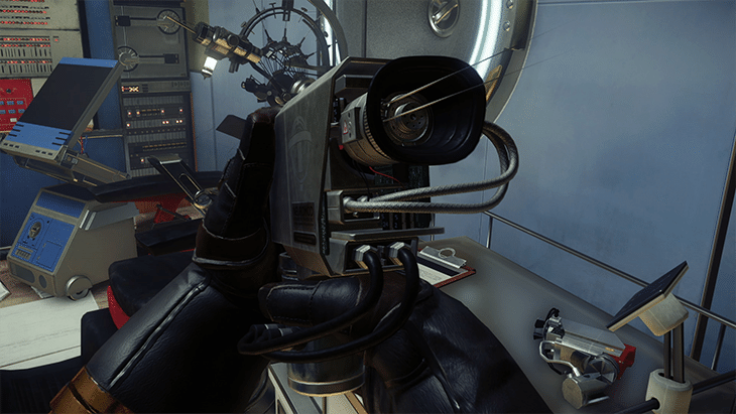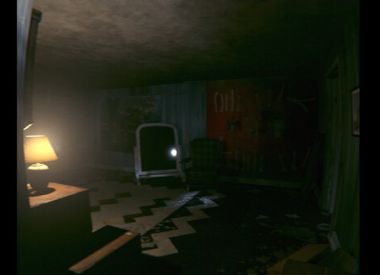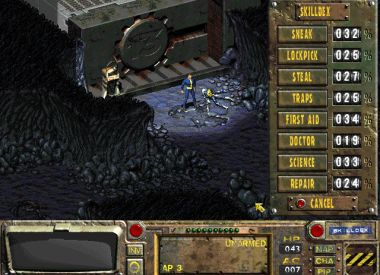On the surface, Prey appears to be a capable sci-fi/horror title that draws from a plethora of icons. Bioshock. 2001: A Space Odyssey. The Matrix. System Shock. The list goes on. But like any great work of art, Prey manages to be more inspiration than duplication when it brushes against these titles. It is wholly unique, a self-contained vessel of found narrative, slick combat and deep moods. I greatly enjoyed my time with Prey, and after 35+ hours left the game feeling like I had more to do and Arkane Studios had more to show me. If this is the foundation of a franchise it’s a solid one, but not without room for improvement. Much like its characters, Prey is flawed and a bit two-dimensional, but also utterly captivating.

Let’s start with Prey s greatest strength: its story. The concept is basically a Philip K. Dick novella. The TransStar corporation has found a way to hack your brain, allowing it to learn skills instantly. The tech, known as neuromods, become the vehicle for delivering skills to the character in the game as well as a fantastic plot device. See, the catch with neuromods is once you uninstall them you lose all the new memories your formed while you had them. So if you learned kung fu today and decided next week you didn’t want it, you would lose the time in between.
This memory wipe is played to sinister effect, especially when coupled with the found narrative structure of the story, told through emails you happen upon while exploring. Prey shows its hand early, letting you know that the reality around you is not to be trusted. Even recordings of yourself feel suspect. So as you discover panicked emails from dead employees who can’t remember people and events recorded in experiment logs and personnel files, it’s not much of a leap to apply that to your own life. We already live in a world where things like dementia and Alzheimer’s wreak havoc on hearts and minds. We know perception trumps reality and that we can be manipulated. Prey takes that uneasy feeling you get from invasive marketing or news stories on corporate data tracking and, through adept use of sci-fi tropes, takes it to a whole other level.
Oh, and the story wraps up with an exquisite plot twist that simultaneously surprises you and validates some of those creeping doubts you had about yourself the whole time you played.
So where does Prey fall short? To be blunt, it’s unstable. I reviewed an Xbox One version and needed two hands to count the times the game crashed on me. This forced me to replay several tedious sections multiple times, which really disrupted the momentum the story had established. There were also a handful of bugs that added needless frustration.

For example, one area had a locked door that required a keycard. The keycard is supposed to be on a destroyed robot, but when I went to the location the official guidebook indicated, the robot wasn’t there. I never got into the room. Another bug had one of my auto-turrets permanently malfunctioned and unable to deploy. It kept saying “there’s no space for the turret to deploy” even though there was PLENTY of space. Lots of pop-up walls in the exterior space exploration hindered my progress. These bugs would matter less in a game that isn’t so dependent on immersing you in mood and atmosphere. It only takes a second to rip you out of the story because of some technical BS, but a whole lot longer to find the groove again.
That groove is well-served by the combat, generally speaking. I don’t understand why Arkane chose not to apply the standout feature of the Typhon, their ability to disguise themselves as regular objects, to enemies larger than the weaker Mimics. Yes, the jump scares are amazing and very well-timed, but I would have appreciated having a scare followed by the genuine threat of a larger foe like a Phantom. And the threats are genuine indeed, thanks in large part to Prey’s consistent focus on survival, scavenging and sacrifice.
The survival and scavenging aspects of Prey are top-notch. There is just enough stuff to help you MacGyver past sticky situations by breaking down found junk into base components for medkits, ammo, etc. Anyone familiar with the Fallout 4 crafting system will feel right at home in Prey. The difference? In Prey there isn’t some open world full of regenerating stuff. Resources feel finite, and repeatedly backtracking through empty rooms adds to the sinking feeling that every object counts.
The sacrifice comes by way of neuromods, in keeping with the themes of the story. Typhon neuromods can imbue superhuman powers like telekinesis and pyromancy, but the cost is high. Soon security turrets begin reading you as an alien and turn against you, and frequent Typhon upgrades increase your encounters with Prey’s penultimate boss monster, the Nightmare. You’ll often think twice about those upgrades, and I finished my game with a stack of unused neuromods. Combat isn’t so difficult you feel the need to go full God mode to get things done. It’s not the focus of Prey, nor should it be. The real focus is Talos 1 itself.
For me, Talos 1 as a setting is the standout feature in Prey. It’s a refreshing change of pace to play a game not set in an endless sandbox environment. Prey manages to be non-linear (mostly) without being a wide-open map. There are skill and story gates barring access to certain places, and the size of Talos 1’s individual sections gives you plenty of room to explore. And explore you will. Loose junk is the difference between life and death, and hacked computer terminals often provide irresistibly snoopable email threads. Talos 1 creates a perfect playspace for compulsion. Not only is it a breathtaking architectural design, but it’s chock full of secrets. You cannot help but wander around.
All the while, this familiar-but-alien constructed space constantly reminds you everything about it is controlled by people and things other than yourself. You need to find other people’s keycards to open doors or use alien powers to clear an obstacle. Nothing can be trusted because it can all be manipulated, down to the tiny coffee cups which turn into aliens that latch onto your face. Even your AI assistant, programmed to speak in your own voice, is suspiciously transparent about its motivations. In a game where you have trouble believing your own reflection, this tension is a constant and seemingly every design choice in Talos 1 supports it in some way.
Prey is the best sci-fi game of the current generation. While other games use sci-fi as a skin for FPS hijinks, Prey stays true to the roots of the genre. It focuses on ideas and storytelling first, and pairs a shrewd crafting system with action and exploration. Prey may seem built on the shoulders of sci-fi giants, but it stands as tall as any of its influences.


















